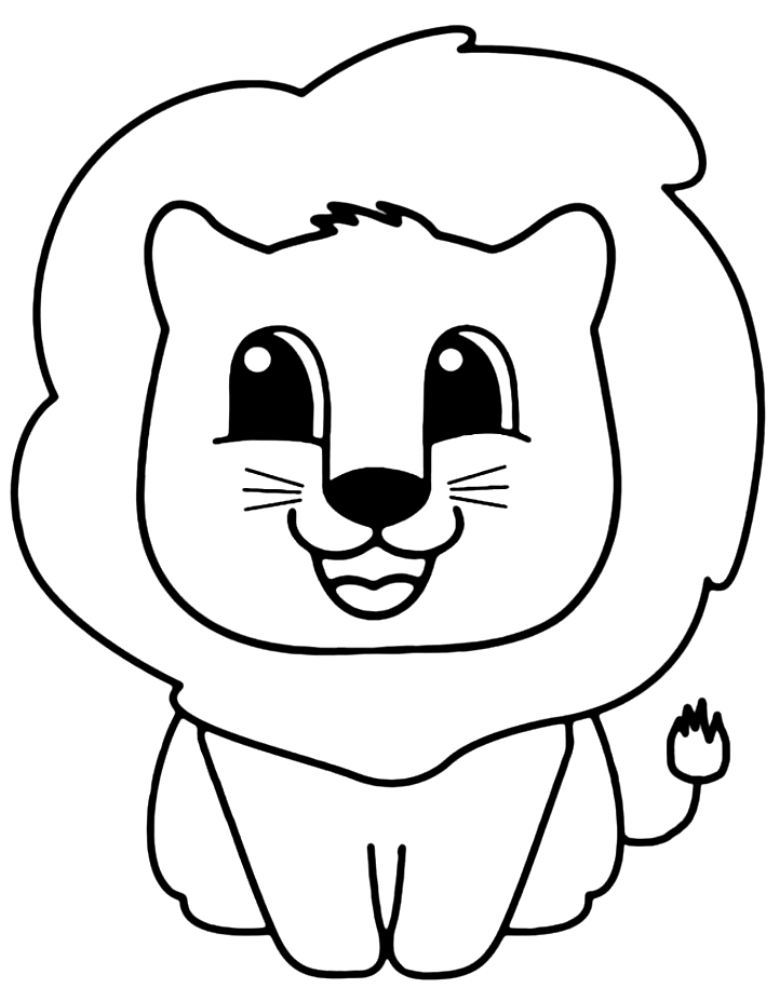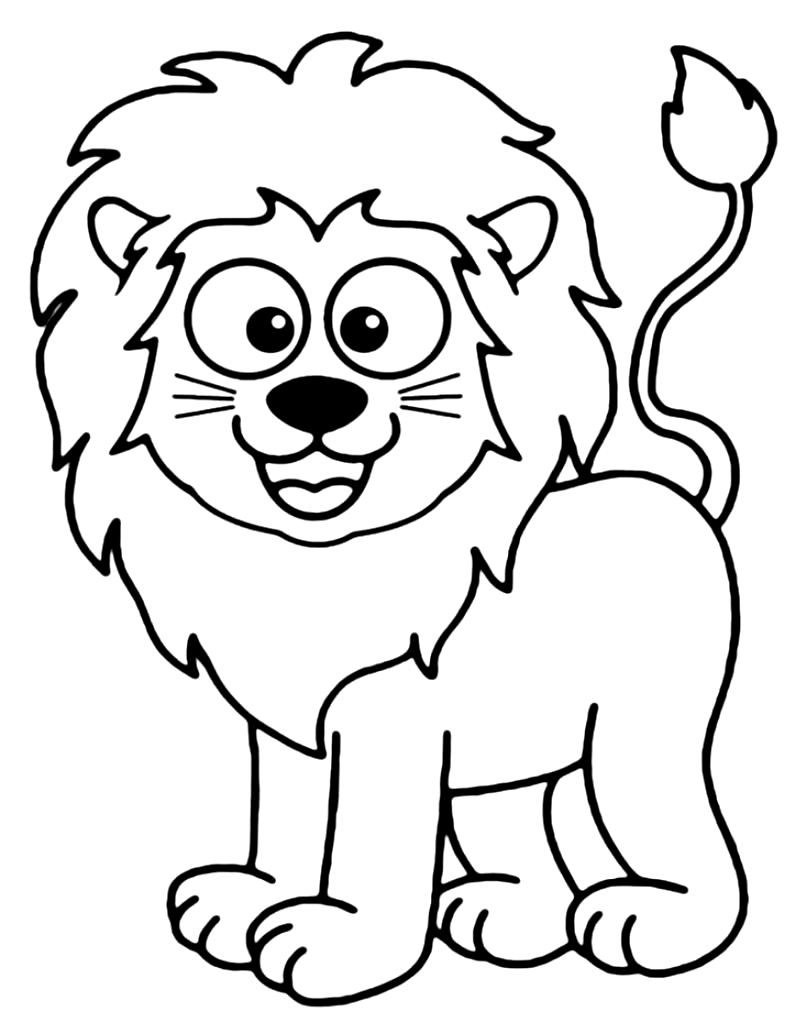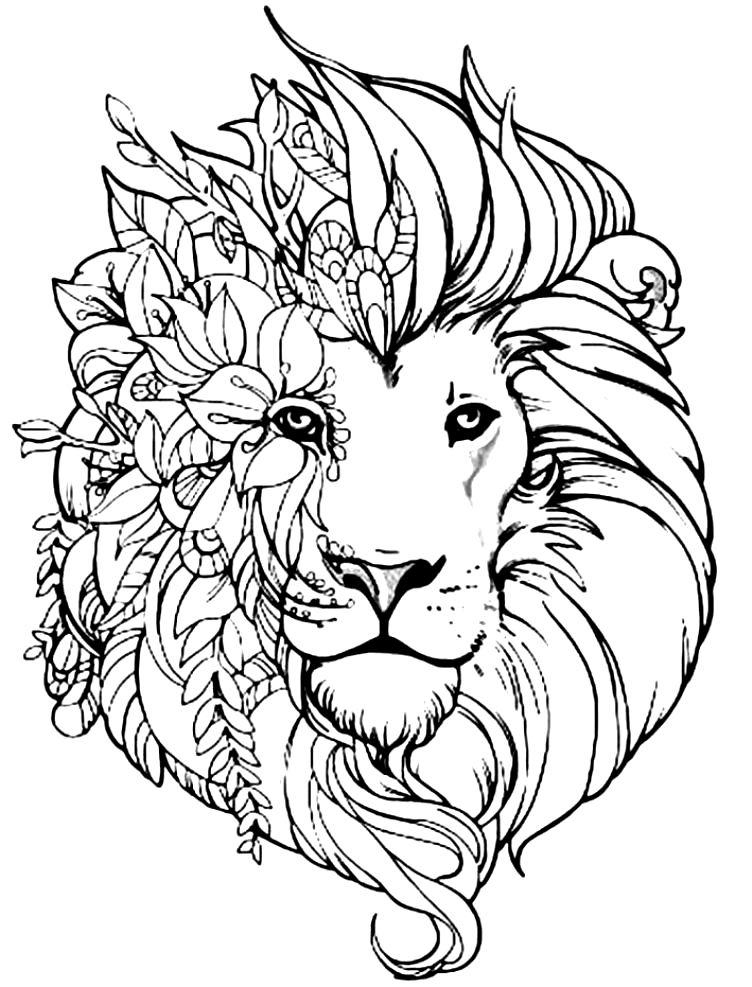Lions
Coloring pages on lions are both instructive and very entertaining. With lion coloring pages, you can learn a lot of interesting information and improve your dexterity while painting. We will need some coloring pencils for the lions worksheets; Primary colors such as light and dark brown, Black, Green, Red, will definitely work for us.
Loins coloring pages (free printable)
Hope you enjoy the lion coloring pages. Now I would like to give you detailed and interesting information about these animals. Lion species are generally found on the Asian and African continents. Lions that also live in semi-deserts and savannas are known to run quite fast. Extremely powerful, lions are carnivores. Lions are one of the largest cat species in the world. In the wild, they live in the savannas of Africa and parts of India. Male lions tend to be larger and heavier than females.
Characteristics of the Lion Animal
One of the most remarkable features of lions is their ability to easily tear apart their prey with their powerful jaw muscles and sharp teeth. They are also highly skilled at tracking and catching their prey, thanks to their strong claws and ability to run fast.
The coats of lions can range in color from yellowish brown to dark brown. The spots on some lions' hides are variable, and each lion's skin is unique.
Lions are social animals and often live as a group. These groups are called packs, genealogies, or clans and are usually led by a male lion. Male lions act as guardians of their group and try to prevent other males from attacking their group.
Lions are among the noblest animals on earth. Therefore, they attract people's attention. For this reason, the characteristics of lions are also interesting. The characteristics of lions are as follows:
- Belonging to the class of mammals, lions are one of the largest cats of the feline family.
- Biologically, its genus is Panthera and its species is leo. They are referred to as Panthera leo in binary nomenclature.
- It is a large, muscular, deep-chested cat with a short, rounded head, a snug neck, rounded ears.
- Fur color; ranges from light camel hair to silver gray, yellowish red and dark brown.
- The head-body length of adult male lions is approximately 184-204 cm, and this length of female lions is 170-184 cm.
- While their weight varies between 90.5-143 kg in female lions, it varies between 155-250 kg in male lions.
- It is an animal with a single tufted tail belonging to the feline family.
- Lions prefer to live in groups. These groups usually consist of several adult male lions, related females and their cubs.
- Lions are known as generalist hypercarnivores. So they are hyper carnivores.
- It is known that they eat an average of 15 kg of meat per day.
- Groups of lionesses often hunt together, and their targets are often large ungulates.
- Lions are super hunters. They do not typically prey on humans, although they are said to prey on humans.
- Injuries developed as a result of frequent battles with rival male lions considerably reduce their life span. For this reason, they generally live 10-16 years in the wild. However, their lifespan in captivity is up to 25 years.
- They are nocturnal animals. They usually sleep during the day and hunt at night.
- They typically live in grasslands and savannas. There are no lions in dense forests.
- Since male lions have manes, they are easily distinguished from female lions.
- Lion cubs are born blind and their eyes open when they are about 7 days old.
- Lion's manes become evident at 5-7 months of age.
- The most well-known peaceful gestures of lions are head rubbing and licking.
- They are known to love swimming.
Types of Lions
Lions are big cats with different species living in different regions around the world. The main type of lion is known as the African Lion and they live in savannas. However, other species also live in Asia, India and even Europe.
1. African Lion
The African Lion is the most common lion species and is commonly seen in Kenya, Tanzania and South Africa. Males weigh on average 250-300 kg and females average 120-180 kg. The fur of African Lions can range from brownish yellow to brown.
2. Asian Lion
The Asian Lion lives in the Indian subcontinent and Southeast Asia. The average weight of males is 160-190 kg and the weight of females is between 110-120 kg. The fur of Asian Lions can range from more pale yellow to reddish brown.
3. Barbary Lion
The Barbary Lion lives in North Africa and is endangered. The average weight of males is 250-300 kg and the weight of females is between 150-200 kg. Barbary Lions' fur usually has a darker color and may have a more distinctive stripe pattern.
4. European Lion
The European Lion has been widely seen in Europe throughout history, but is currently only rarely seen in Eastern Europe. The average weight of males is 200-250 kg and the weight of females is between 130-150 kg. The fur of European Lions is usually tawny tones with distinctive black stripes.
Life Cycle of Lions
Lions are a large cat breed with a long life cycle. The life cycle consists of the processes of birth, growth, mating, reproduction and death.
1. Birth: Lion cubs are born in lionesses' nests. Birth is usually between 3-4 puppies. The cubs' eyes open after about 2 weeks and the baby lions are fed with mother's milk for about 3 months.
2. Growth: Cubs turn into adult lions in about 2-3 years. During this time, the cubs are taught hunting and survival skills by their mother.
3. Mating: Lions enter into serious competition during their mating season. Lionesses choose according to the strength and courage of males. As the leader of their pack, male lions try to attract the attention of the females.
4. Reproduction: Lionesses reach sexual maturity, usually from the age of 4, in order to become pregnant. Pregnancy lasts about 3 months, and lionesses usually give birth to their cubs in wooded areas.
5. Death: Lions struggle to survive due to their natural enemies and aging. Old or injured lions may have to leave their herd or be killed by stronger lions in their herd. However, despite their natural habitat, lions can live a long life, and herd leaders in particular can survive for many years.
Lions have different characteristics from each other. Leos lead their monogamous and family life. The male lion usually looks for the most fertile lioness. Lions determine their life span depending on nutrition, climatic conditions and environmental factors. Lions are known as the largest felines. The priority is the tigers. Lions are the only felines in the feline family to have a tufted tail.
Even if felines don't like swimming, lions love to swim. Also, a male lion has a length of about 3 meters. The bite of any house cat is one-third of the bite of a lion. Felines that can roar include the lion, jaguar, and tiger. It is also known by many that lions usually hunt in teams. Lions go out to hunt together in packs in order to catch their prey quickly and protect each other.












